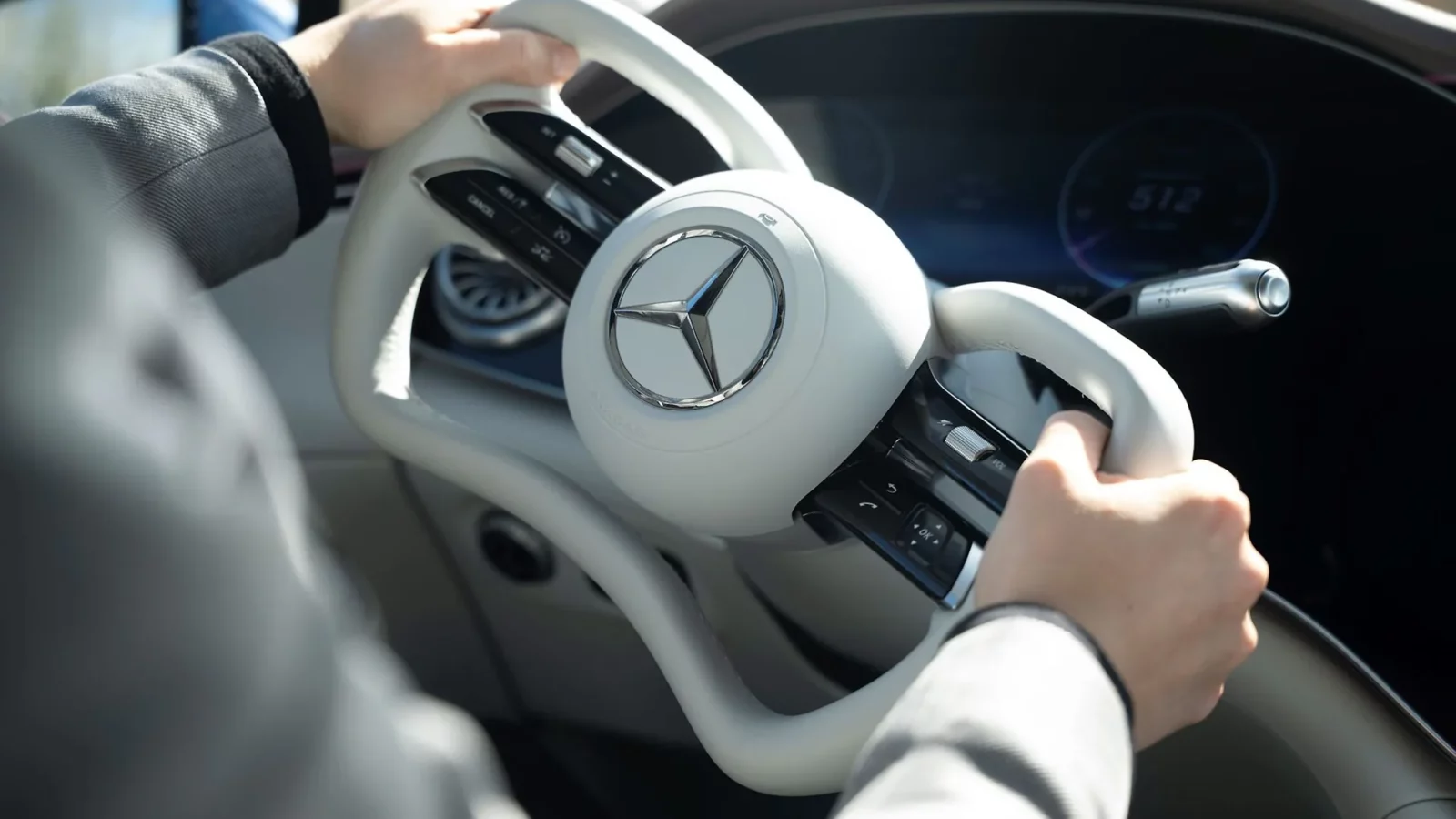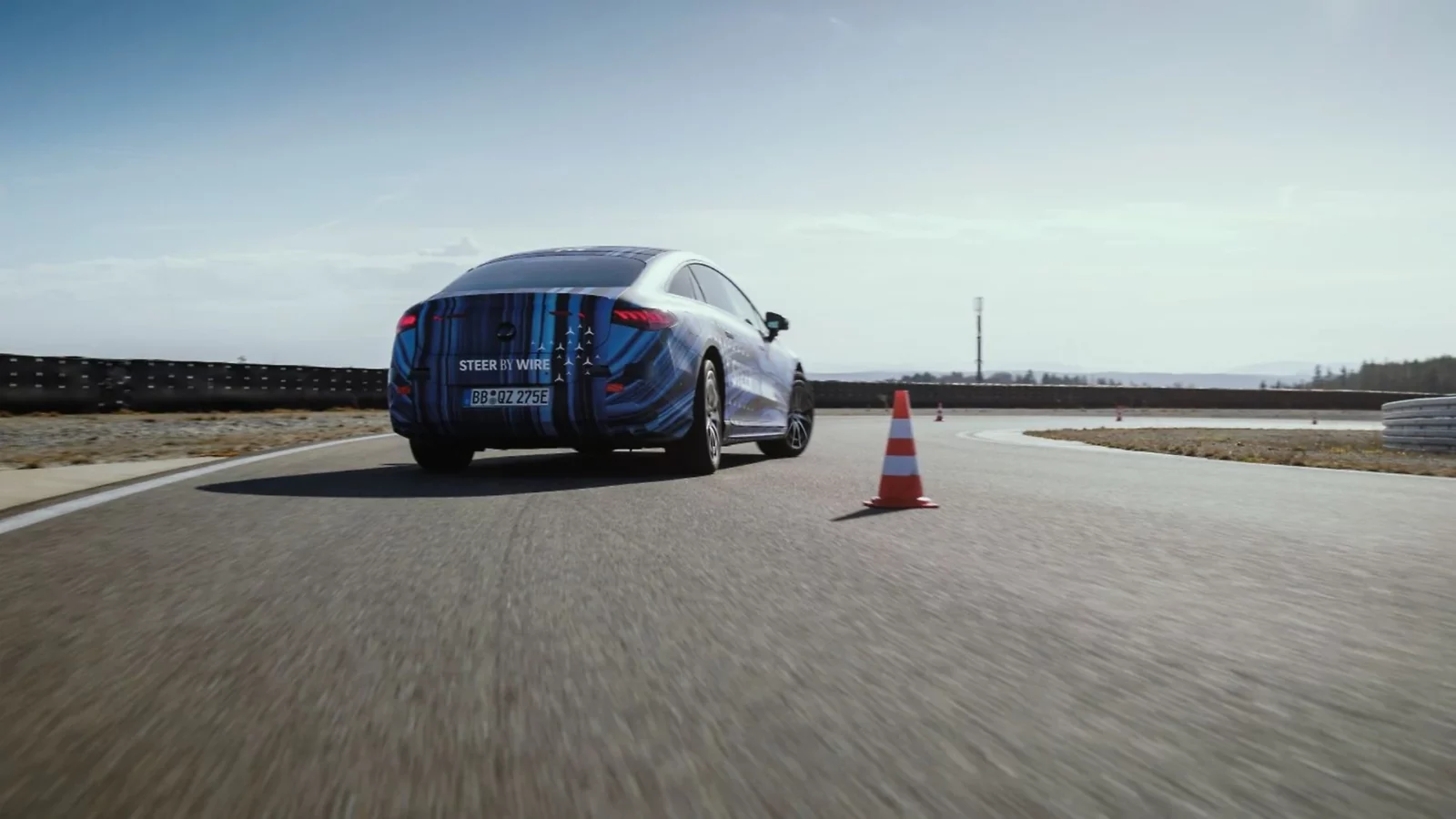Header: Courtesy of Mercedes-Benz
A steering wheel is more than just a car component – it connects the driver with the road via the tyres. The steering wheel provides feedback on driving behaviour, enables the driver to feel uneven road surfaces, and, in the past, was the physical cranking mechanism for manoeuvring into parking spaces.
A new era of vehicle operation is about to begin for Mercedes-Benz customers. From 2026, the company will be the first German car manufacturer to offer a production vehicle with steer-by-wire technology. This technology does not require a mechanical connection between the steering wheel and the front wheels. Instead, the driver’s steering requests are transmitted quickly and directly via an electrical cable, i.e., “by wire.”
The completely new steering feel provides a different driving experience with a range of advantages in everyday use: handling is improved, and manoeuvring and parking become easier. Steer-by-wire can further reduce the effort required, and there is no longer a need to re-grip the steering wheel while parking.
Steer-by-wire is an important development in the evolution of vehicle control, and we will be launching such a system in 2026,” said Markus Schäfer, member of the Board of Management of Mercedes-Benz Group AG and Chief Technology Officer, Development & Procurement. Schäfer continued, stating, “The technology supports new options for vehicle operation that go beyond steering alone. In combination with SAE Level 3 conditionally automated driving, it will enable additional functions in the medium term. For example, the flat steering wheel provides a clearer view of the display when using in-car entertainment features.“

Balanced driving characteristics through variable steering ratios
The suspension specialists can choose the steering ratio variably and adapt it flexibly to different situations. This enables the simultaneous optimisation of driving characteristics that previously conflicted with one another. It can also improve directional stability and lateral agility, supported by coordination with the rear-axle steering (with a steering angle of up to 10 degrees). Vibrations caused by uneven road surfaces, which were previously transmitted to the driver via the steering wheel, can now be significantly reduced.
The potential for individualisation is high through the adaptation of the electronic steering to customer preferences. Individual brands or specific models within a series can be given different steering characteristics. Steer-by-wire also creates new potential in the design of new architectures by decoupling the steering wheel and steering gear. Another possible application of the technology is integrating gaming features when the driver stops for a break.
Interior design flexibility
The steering wheel can be flatter, which results in a more spacious feel and a better view of the driver’s display. It also makes getting in and out of the car easier because the flattened underside of the steering wheel creates more room. In combination with future conditionally and highly automated driving systems, the driver could adopt a different seating position in the long term.
The functionality of steer-by-wire in detail: Depending on the driving speed and situation, an actuator on the steering wheel (steering feedback unit; SFU) sends the driver’s steering signal to the steering rack (steering rack unit; SRU), which steers the wheels. The SFU also generates the steering feel typical of Mercedes-Benz. Since the mechanical decoupling of the steering wheel and wheels eliminates steering torque, the tyre-road contact is calculated on a model-by-model basis with the help of the restoring forces of the steered wheels.

Extensive testing on test benches and in traffic
The new steer-by-wire system from Mercedes-Benz has already completed more than one million test kilometres on test benches. In addition, a similar number of test kilometres has been completed on proving grounds and in real-world driving conditions. In line with its safety requirements, Mercedes-Benz relies on a redundant system architecture supported by high-precision sensors and control units. This includes two signal paths, twice the number of actuators, and a redundant onboard data and power supply. Steering ability is maintained even in the event of a system failure. Lateral guidance remains possible through rear-axle steering and targeted wheel-specific braking interventions via ESP.








